Common Cat Food Storage Mistakes And Their Impact On Your Cat’s Health
By: Lana Koh
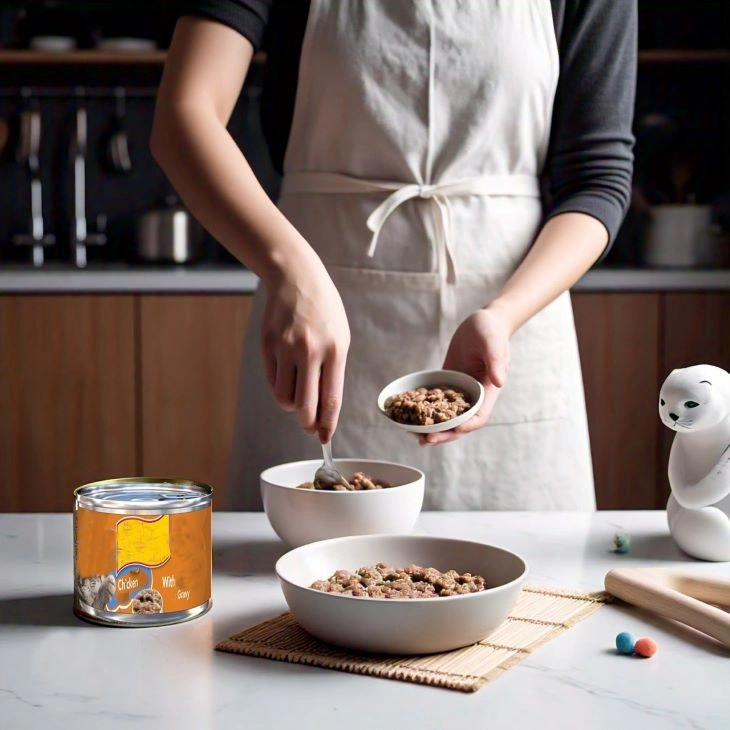
The information in this article is intended to educate cat parents and is not a substitute for veterinary guidance. In case of any concerns about your cat’s health, please talk with your veterinarian.
Proper cat food storage plays a vital role in maintaining your cat’s health. Many cat owners make mistakes that can lead to spoilage, loss of nutrients, or even health issues for their pets. Here are some common mistakes which every pet owner should avoid as these can severely impact your cat’s well-being.
Also Read: Can Cats Eat Plantains?
1.) Throwing Away Your Cat Food’s Original Packaging
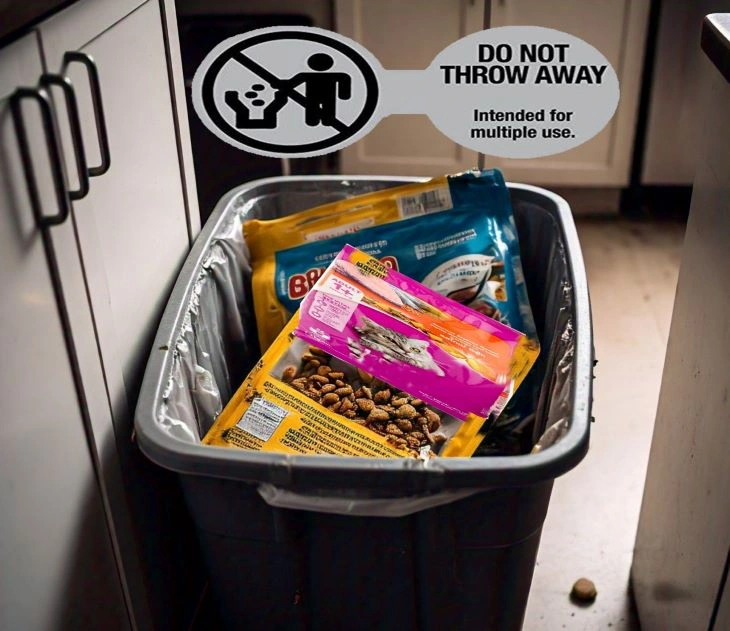
The original packaging of high-quality cat food is carefully designed to maintain freshness and protect it from moisture, air, and contaminants. While it might seem convenient to transfer the food into an airtight container, it’s better to keep the food in its original bag even when using such containers. The bag’s material helps preserve the food’s quality over time.
Moreover, the packaging includes essential details like the expiration date, barcode, and batch code. These are crucial in case of a cat food recall or if you need to check product specifics. For optimal storage, place the bag with the food inside a resealable container to combine the benefits of airtight storage and the protective design of the original bag.
2.) Ignoring Expiration Dates
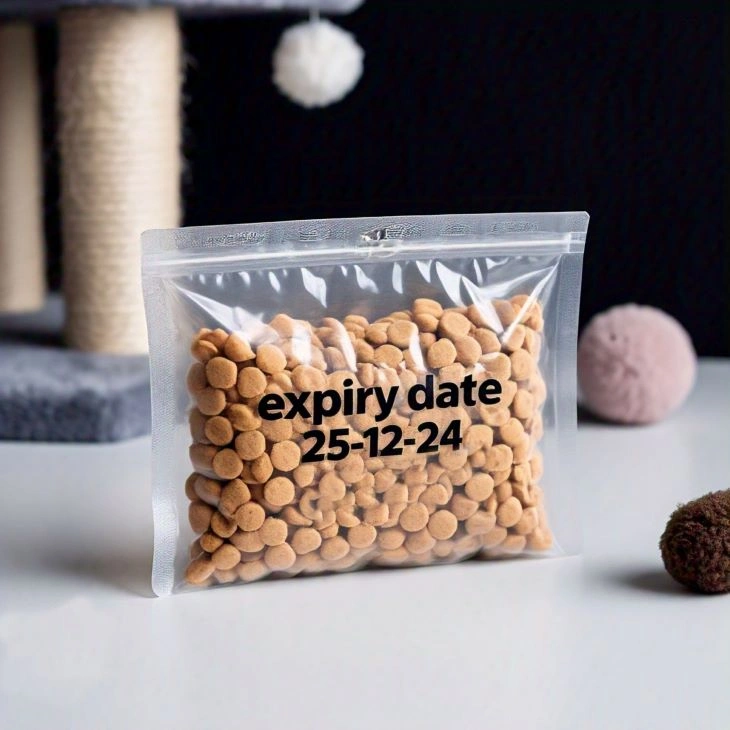
Always check the expiration date on cat food packages. Feeding your cat expired food can lead to serious health issues such as gastrointestinal problems. It’s wise to purchase food in amounts that you can use before it expires. Also, note the “best by” date and rotate your stock to use older bags first.
3.) Storing Food In Warm Places
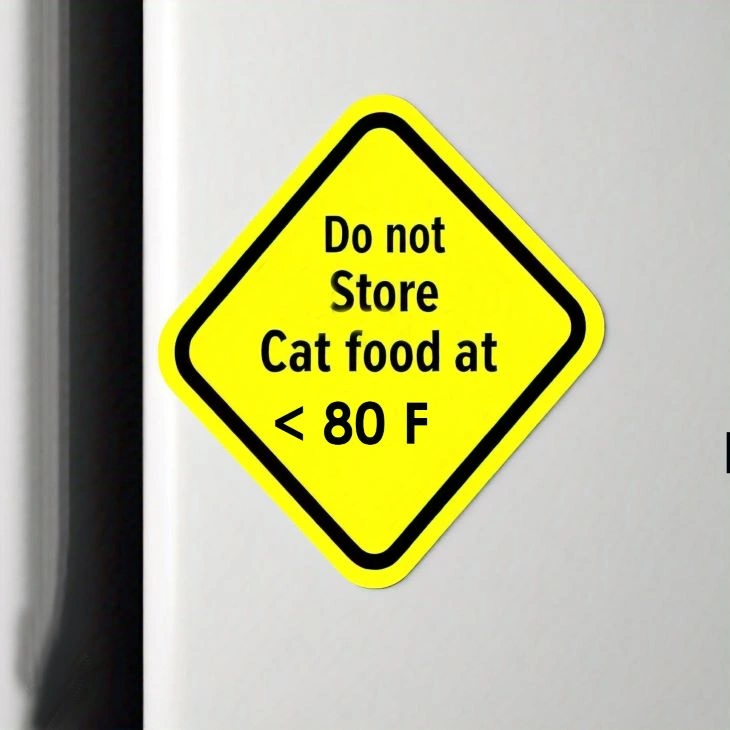
Temperature plays a vital role in food freshness. Storing cat food in a warm location, like near a stove or in direct sunlight, can promote spoilage. Aim for a cool, dry area for storage—preferably below 80°F. This not only maintains the food’s nutritional value but also helps keep your cat healthy.
4.) Failing To Clean Containers
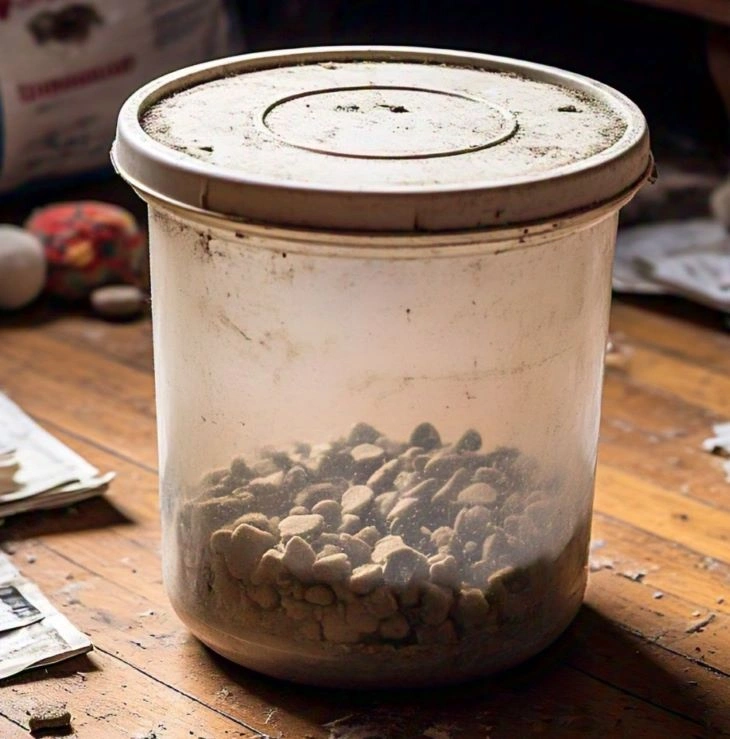
If you’re using a container for storing your cat food, it’s essential to keep it clean. Old food residue can attract bacteria and pests, which can contaminate the new food. Before refilling the container, wash it with soap and water, dry it thoroughly, and ensure it’s free from any moisture. This simple step can protect your cat from foodborne illnesses.
5.) Poor Handling Of Wet Food
Wet cat food has unique storage needs. After opening a can, it’s important to refrigerate any uneaten portion immediately. Leaving wet food out can lead to rapid bacterial growth, which can make your cat sick. Use a clean spoon to serve, and always cover wet food to keep it fresh. Ideal storage means using it within 24-48 hours but always check for any visible changes or odors before serving.
Click to know: Can Cats Drink Milk?
6.) Ignoring Signs Of Spoilage
It’s essential to know how to recognize spoiled cat food. Look for changes in color, texture, and smell. If the kibble has become soft or the canned food emits an unusual odor, it’s best to discard it. Feeding your cat spoiled food can lead to serious health repercussions, including vomiting and diarrhea.
7.) Not Considering Food Variety
Your cat may become picky if they always eat the same food. While this doesn’t directly relate to storage, it’s a common issue connected to feeding habits. Ensure you store different kinds of food if you choose to rotate their diet. Just remember to keep each type of food well-sealed and properly labeled.
Read: Can Cats Eat Dragon Fruit?
8.) Storing Too Much Food
Many cat owners buy in bulk to save money but storing too much food can lead to problems. If you can’t use up the food before it goes stale or expires, it’s a waste of money and can be harmful to your cat’s health. Stick to purchasing manageable quantities. Smaller bags might be pricier, but they offer fresher options for your pet.
9.) Inadvertently Offering Human Food
Sometimes people mistakenly think that leftover human food can be a great addition to cat meals. Often, human food lacks essential nutrients for cats or may contain ingredients that are toxic to them, such as garlic or onions. If you find a way to elevate your cat’s meals, make sure to consult a vet for appropriate and safe options. Additionally, always store leftovers in a cat-proof way to ensure your pet doesn’t access harmful food.
Being mindful of these storage mistakes can significantly impact your cat’s overall health. By ensuring proper storage practices, you can help maintain the freshness of their food, keep them happy, and promote a longer, healthier life. Remember, your cat relies on you for their nutrition, and every small step you take in optimizing their food can lead to better health outcomes.
Also Read: Can Cats Eat Pumpkin?
How TO Store Cat Food To Ensure Freshness And Safety
When it comes to cat care, one essential aspect that pet owners often overlook is proper food storage. Keeping your cat’s food fresh and safe can make a big difference in their health and happiness. Here are some best practices that will help you store cat food effectively.
Understanding Your Cat Food
Before proceeding to storage tips, it’s important to understand the type of cat food you have. Dry food, wet food, and homemade meals all have different storage needs. Knowing these can guide you in ensuring freshness.
Click To Read: Can Cats Eat Seaweed?
Choosing The Right Storage Container
Using the right container is crucial. Cat food should be stored in a container that:
- Is airtight to protect against moisture and contaminants.
- Is made of food-safe materials for safety.
- Is opaque, as light can degrade the quality of the food.
Containers made of metal, glass, or certain high-quality plastics are excellent choices. Avoid using paper bags or the original packaging for long-term storage, as these can allow moisture and pests to interact with the food.
Optimal Location For Storage
Where you store cat food is just as important as how you store it. Follow these tips:
- Avoid hot and humid areas: Keep cat food in a cool, dry place away from direct sunlight and heat sources.
- Keep food off the ground: Store containers on shelves to prevent exposure to dust and pests.
- Ensure easy accessibility: Location matters for ease of use but avoid areas where moisture might accumulate, like near sinks.
Pay Attention To Expiration Dates
Always check the expiration date on your cat food packaging. Storing food past its expiry date can lead to spoilage and health risks.
Avoid Frequent Air Exposure
Every time you open a bag of cat food, air enters the container. This can lead to oxidation, making the food stale over time. Minimize this exposure by:
- Using smaller bags: If possible, buy smaller quantities that your pet can consume quickly.
- Sealing the container immediately: After each use, make sure to close the container tightly.
Monitoring Food Freshness
It’s vital to regularly check the food for signs of spoilage. Here’s what to look for:
- Smell
- Texture and Color: Changes in texture or color can indicate the food is no longer fresh.
- Pests: Always inspect for bugs or other pests that may have infested the food.
Frequently Asked Questions
Final Thoughts
To keep your cat happy and healthy, proper food storage is essential. Avoiding exposure to air, moisture, and light preserves the taste, nutritional value, and safety of your cat’s meals. Use airtight containers, store food in cool, dark places, and always check expiration dates to prevent spoilage. These small steps ensure your feline enjoys fresh, nutritious meals, supporting their overall well-being and strengthening your bond. By taking care of their food storage, you’re investing in a healthier, happier life for your cherished pet.

About the Author
Lana Koh
Lana is a passionate cat lover with years of experience caring for her feline companions. As a dedicated volunteer at animal shelters, she’s gained valuable insights into the world of cats. Lana channels her love and knowledge into writing informative and engaging articles for fellow pet owners, covering topics like cat health, nutrition, grooming, behavior, and the special bond we share with our feline friends.
